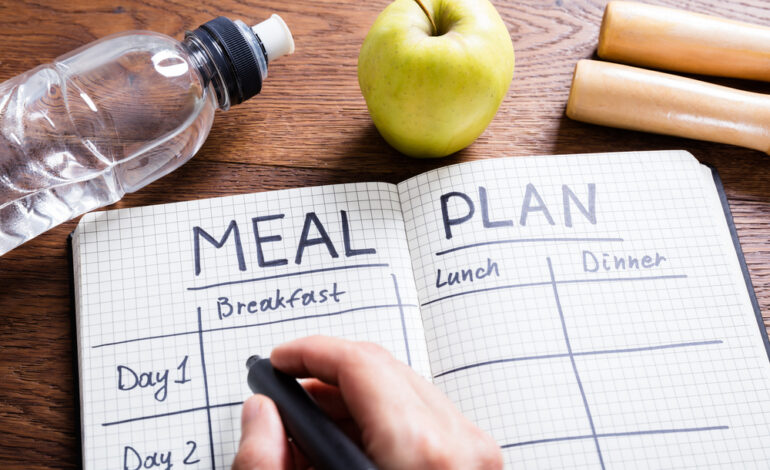Meal Planning for Diabetes: A Roadmap to Balanced Eating

Meal planning is a powerful tool for managing diabetes. By creating balanced meal plans, you can take control of your blood sugar levels and enjoy a variety of delicious and nutritious foods. In this blog, we’ll delve into the art of meal planning for diabetes, offering practical tips on choosing the right foods and portion sizes to support your diabetes management goals.
The Importance of Meal Planning
Meal planning is essential for individuals with diabetes because it:
- Balances Blood Sugar: Carefully planned meals help stabilize blood sugar levels throughout the day.
- Manages Carbohydrates: Effective meal planning involves monitoring and controlling carbohydrate intake, which has the most significant impact on blood sugar.
- Promotes Variety: Meal plans offer variety, making it easier to stick to a diabetes-friendly diet.
- Controls Portions: Portion control is a key aspect of diabetes management, and meal planning helps you achieve this.
Creating Your Diabetes-Friendly Meal Plan
Let’s explore the steps to creating a diabetes-friendly meal plan:
1. Consult Your Healthcare Provider: Before starting, consult your healthcare provider or a registered dietitian. They can help determine your specific nutritional needs, including daily calorie and carbohydrate targets.
2. Know Your Carbohydrates: Carbohydrates significantly affect blood sugar. Learn to identify carbohydrate-rich foods and their portion sizes. Common sources include grains, fruits, dairy, legumes, and starchy vegetables.
3. Balance Your Plate: Aim for a balanced plate with:
- Non-Starchy Vegetables: Fill half your plate with non-starchy vegetables like broccoli, spinach, and bell peppers.
- Lean Protein: Include lean protein sources like poultry, fish, tofu, and legumes. They help maintain fullness and steady blood sugar.
- Healthy Fats: Incorporate sources of healthy fats, such as avocados, nuts, seeds, and olive oil, in moderation.
- Carbohydrates: Allocate a portion of your plate for carbohydrates. Be mindful of portion sizes to control blood sugar.
4. Portion Control: Portion sizes matter. Consider using measuring cups or a food scale to ensure accuracy.
5. Timing Matters: Spread your meals and snacks throughout the day. This helps prevent blood sugar spikes and crashes.
6. Monitor Your Blood Sugar: Regularly check your blood sugar levels to understand how different foods affect you. This information can guide your meal planning.
7. Keep a Food Diary: Keeping a food diary can help you track what you eat, how it impacts your blood sugar, and identify patterns.
8. Experiment with Recipes: Explore diabetes-friendly recipes and experiment with new flavors and ingredients. Cooking at home allows you to control the ingredients and portion sizes.
9. Stay Hydrated: Remember to drink plenty of water throughout the day. Dehydration can affect blood sugar levels.
10. Be Mindful of Snacking: If you snack, choose healthy options like raw vegetables, Greek yogurt, or a small handful of nuts.
Sample Diabetes-Friendly Meal Plan
Here’s an example of a balanced, diabetes-friendly meal plan for a day:
Breakfast:
- Scrambled eggs with spinach and tomatoes
- Whole-grain toast (portion-controlled)
- Berries
Lunch:
- Grilled chicken breast salad with mixed greens, cucumbers, and vinaigrette dressing
- Quinoa or brown rice (portion-controlled)
Afternoon Snack:
- Greek yogurt with a sprinkle of nuts
Dinner:
- Baked salmon with lemon and asparagus
- Steamed broccoli
- Cauliflower mash (portion-controlled)
Evening Snack (if needed):
- Sliced bell peppers with hummus
Conclusion
Meal planning for diabetes is a powerful tool for achieving and maintaining balanced blood sugar levels. By consulting with healthcare professionals, understanding carbohydrates, balancing your plate, and being mindful of portion sizes, you can create diabetes-friendly meal plans that suit your taste and lifestyle.
In the next blog, we’ll explore dining out with diabetes, offering tips and strategies for making healthy choices at restaurants and social gatherings. Stay informed and empowered on your diabetes management journey.










